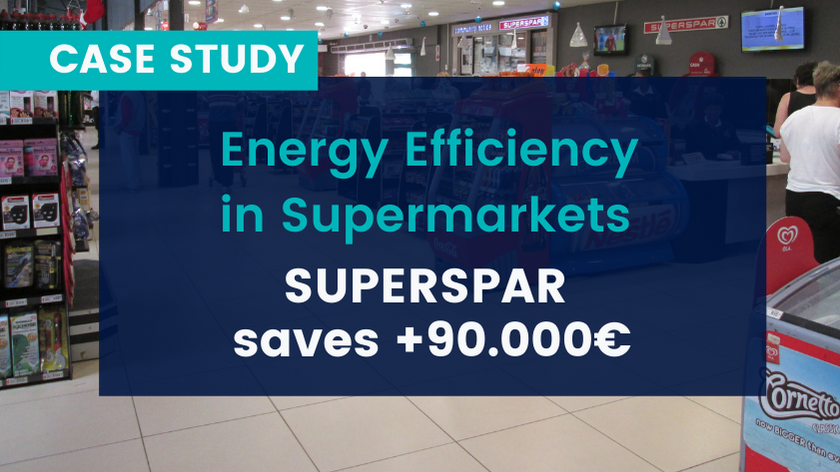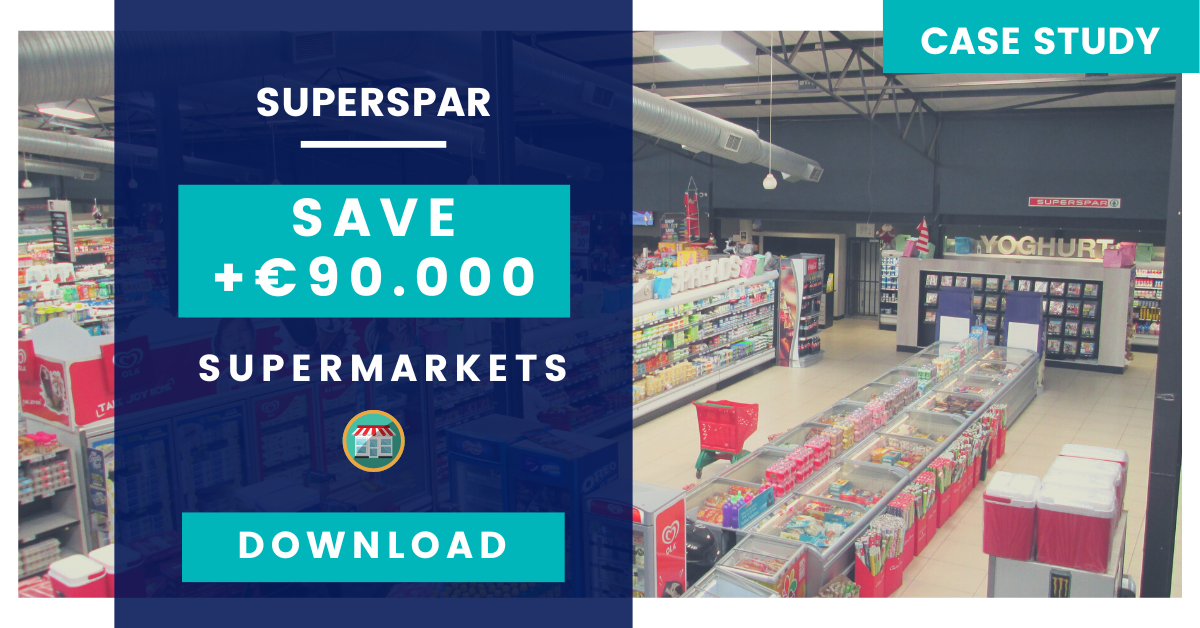Supermarkets are one of the retail sectors with the most energy consumption. It is distributed among the different installations and departments (refrigeration machines, ovens, household appliances on display, etc).
You can easily assume high numbers when imagining these energy costs, right? Well, this does not mean that these types of establishments cannot be energy efficient or reduce their consumption. I’m going to show you with a real case, the SUPERSPAR success story.
How Supermarkets Consume Energy
One thing I have already mentioned, the energy consumption in supermarkets has many different sources. So, where do you think most of the energy consumption comes from?
Perhaps you already imagined it, the highest energy consumption come from refrigeration. It usually is around 60% of total energy cost. This has sense because you’ll find many feeding corridors made up exclusively of refrigerators and freezers, and they consume a lot of energy.
It is following by 18% energy consumption from lighting, which is found on ceiling, shelves and displays. The HVAC consume is also significant, because it can consume up to 15% of total.
Obviously, these are average data for the sector, but these percentages will vary according to every establishment and their characteristics. For example, for some supermarkets, the bakery area may be larger and more consumed than the fish market, or vice versa.
If to the high energy costs (between 10% and 15% of their operating costs) that supermarkets have, we add the fact that the margins of the sector are not usually very high: implementing an energy efficiency plan in a supermarket is one of the best strategies to carry out.
You will understand this statement better when you look at the real case of the SUPERSPAR supermarket chain, in particular, one of its stores in the Easter Cape province of South Africa. Where with the help of our partner IDM Solutions (experts in energy efficient management) they have achieved savings of €93,476 at the end of the project.
How the SUPERSPAR Supermarket Became More Efficient
The success story you will see today is of a supermarket with a surface area of more than 2,000 m2, which is open 7 days a week for 13 hours a day.
Opening hours are also key for energy efficiency projects in supermarkets, as they depend on the geographical area and will vary both in opening hours and days. In this case, for example, they are open every day of the week, but this will change in other areas or countries. For example, in the case of UK, the usual practice is to close on Sundays and close earlier on Saturday. Although there are exceptions where, for example, coastal establishments are open 7 days a week during the summer season.
Sometimes customising your supermarket’s energy efficiency plan by taking into account the “Operating Hours” factor can get complicated. Well, I have some good news, there are already applications that help you to analyse the consumption with the opening hours that you indicate them. This is the case of the Operating Hours app that you can find inside the DEXMA Platform.
As I was saying, the case of SUPERSPAR is a large establishment, which also has an intensive use of energy in areas such as bakeries, frozen food,… for many hours due to its opening hours.
So obviously, the biggest concern for the owners of SUPERSPAR was to reduce the cost of electricity. But this was not the only concern for them, they also wanted to reduce carbon emissions without affecting productivity.
IDM Solutions faced 2 major challenges to help this supermarket create an energy efficient management plan for the store.
To do this, he relied on the advanced energy analysis offered by DEXMA, with which he could not only detect inefficient equipment but also translate energy savings into precise financial terms.
As a result, SUPERSPAR saves more than €90,000 in energy, 25% of its initial cost.
So if you want more details of the case study, I encourage you to download the pdf, where you will discover some of the measures taken by SUPERSPAR with the help of IDM Solutions.




